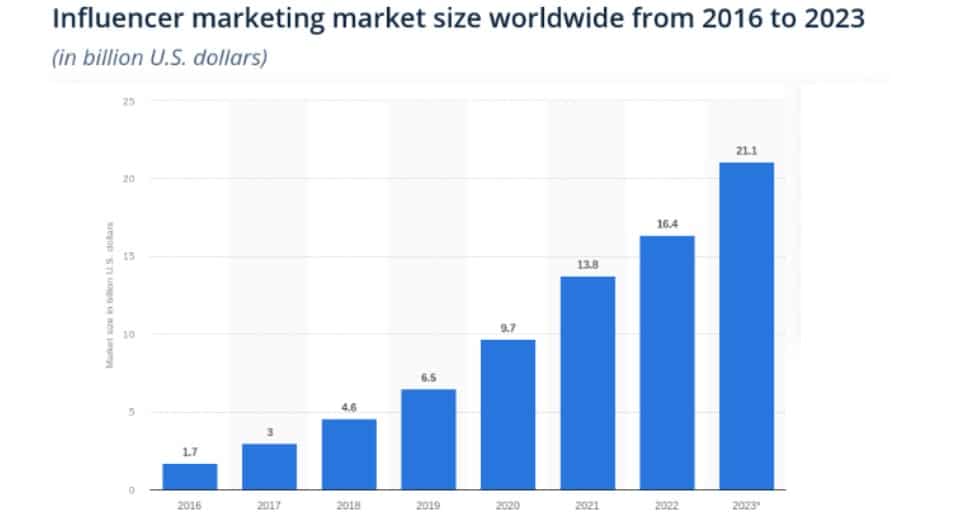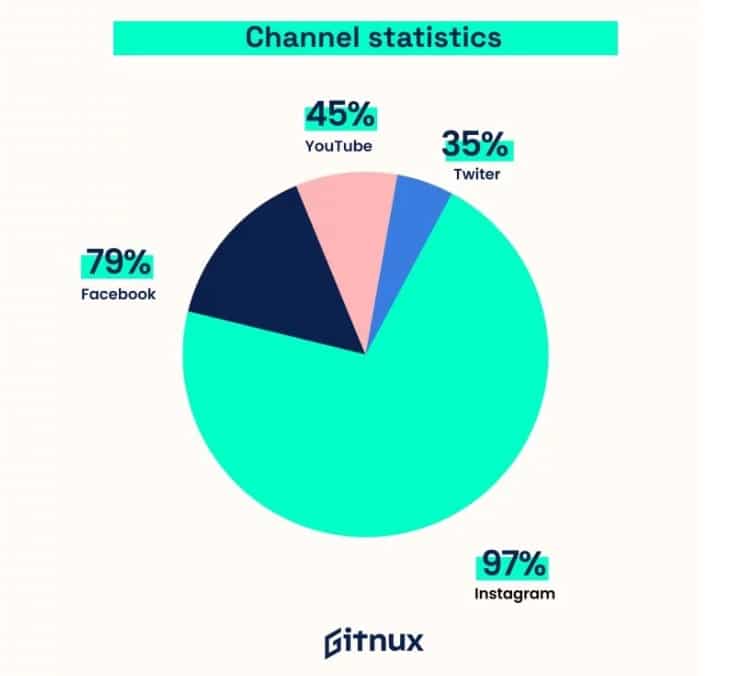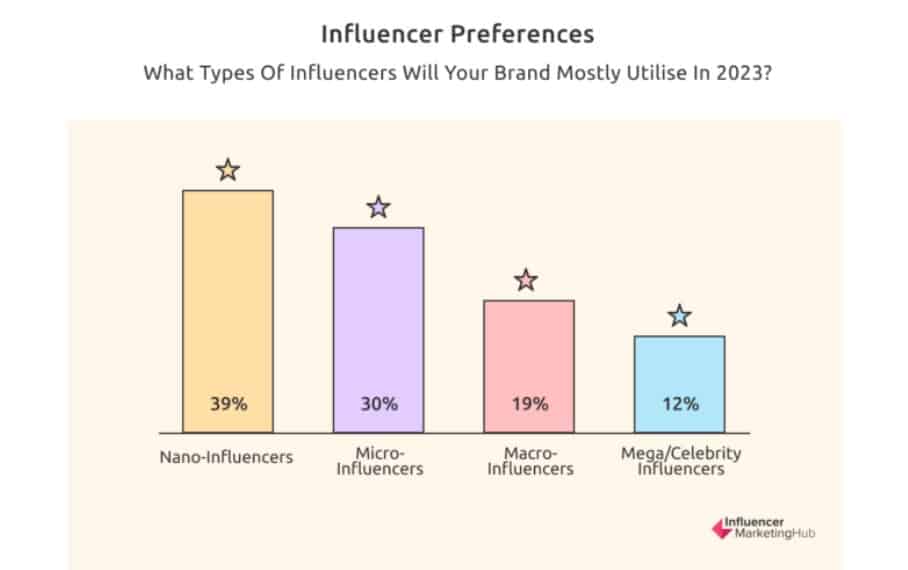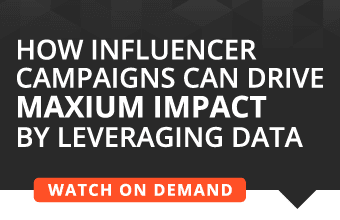More and more brands are using influencers and digital content creators as a form of marketing. Is influencer marketing worth your time and money?
PR managers can leverage influencer marketing when helping clients build their brand awareness. Influencers can even play a role in crisis management or major changes to clients’ products or services to help reach the right customers.
Ensuring that you get a high return on investment from influencer marketing requires careful research. It’s also important to have a clear strategy in place to measure success. Luckily, this article has concrete and actionable tips for making influencer marketing worthwhile.
Influencer marketing in review
Influencer marketing is a type of social media marketing. Brands work with influencers to place products and brand endorsements on their platform. Whether it’s a tech reviewer who can review VoIP telephone systems or a beauty TikTok star who uses branded products, influencers promote brands to their audiences in a positive light.

Image sourced from statisa.com
Influencers can range from famous celebrities to popular YouTube personalities, bloggers, and even micro-influencers, who might have a smaller but more dedicated and engaged following. These individuals have the power to affect the purchase decisions of others.
How it works: Brands partner with influencers to promote their products or services to the influencer’s audience. This could be through sponsored posts, reviews, giveaways, video endorsements, or other creative content collaborations.
Benefits of influencer marketing
- Reach & engagement: Brands can reach a targeted audience through a trusted voice. This can lead to better engagement and often a higher return on investment compared to traditional advertising.
- Authenticity: If done correctly, influencer marketing can come off as more genuine and authentic than traditional advertisements. This is especially true when influencers have genuine love or interest in the products they’re promoting.
- Niche marketing: Micro-influencers, despite having a smaller audience, can be highly effective for niche products or services as they often have a more dedicated and engaged follower base.
Challenges to making influencer marketing worthwhile
- Finding the right fit: Not every influencer is a good fit for every brand. It’s important to choose influencers whose audience aligns with the target demographic and who have values and content consistent with the brand.
- Measuring ROI: The return on investment can be harder to measure compared to more direct forms of advertising like email marketing.
- Oversaturation: As influencer marketing has become popular, there’s a risk of audiences feeling overwhelmed or distrustful of sponsored content.
- Ethics and transparency: Regulations and guidelines, like those from the Federal Trade Commission (FTC) in the U.S., often require influencers to disclose when they are being paid or have received free products for promotions. This is to maintain transparency and trust with their followers.
How to measure influencer marketing’s value
1. Set clear objectives
Before you begin, know what you want to achieve. Common objectives include increasing brand awareness or social media followers, driving traffic to a website, generating sales, or collecting user generated content.

Image sourced from gitnux.com
You should also have a clear idea of what your target social media channels are. While diversifying the channels you use is useful, your target audience may well be focused on one particular channel.
2. Measure engagement and conversion metrics
There are various metrics you can track to ensure that your influencer marketing campaign is successful. Engagement (the extent to which users are actually engaging with the influencer’s content) and conversion rate (how many of these users then go on to look at your website or buy something) and two key metrics.
To measure these metrics, consider the following:
- Likes, comments, and shares: These are basic metrics that provide a glimpse into how interactive followers are with the content.
- Engagement rate: This is the percentage of the influencer’s audience that interacts with their content. It’s calculated by dividing total engagement (likes + comments + shares) by total followers and multiplying by 100.
- Click-through rate (CTR): Measure how many users click on the provided link (this could be in a post or the influencer’s page’s bio).
- Sales conversions: Use tracking links or promo codes unique to the influencer to track how many sales are directly attributed to their promotion.
3. Consider audience growth and quality
If you want to make influence marketing worth your time and money, you need to keep an eye on the audience you’re reaching.

During and after an influencer marketing campaign, you should measure not just the growth of your own followers but those of the influencer. This will give you an idea of the potential growth rate of this form of digital marketing.
Remember, not all followers are equal. You should also analyze the influencer’s audience for relevance, demographics, and engagement to ensure they align with your target market. And keep an eye out for fake followers—larger influencers with millions of followers may have bots boosting their numbers.
4. Calculate cost per engagement (CPE) and return on investment (ROI)
One key metric to consider is CPE, which will help you understand the cost-effectiveness of the campaign. This is calculated by dividing the total amount spent on the campaign by the total number of engagements (likes, comments, shares).
Calculate the ROI by subtracting the cost of the influencer campaign from the campaign’s profit and then dividing it by the cost of the campaign. Multiply the result by 100 to get a percentage.
6 tips to make influencer marketing worth your investment
1. Choose the right influencers
Money spent on influencer marketing is money wasted if you don’t choose the best influencers for your brand. A fashion Instagrammer isn’t the best fit for promoting remote control devices, but a tech Youtuber might be. To do this, you should consider:
- Relevance: Ensure the influencer’s content aligns with your brand and appeals to your target audience.
- Engagement: A genuine engagement rate is often more valuable than a massive follower count. Look for influencers whose audience actively interacts with their content.
- Authenticity: Choose influencers who have a genuine voice and a history of transparent, authentic content.
2. Negotiate fairly
A win-win partnership ensures the influencer feels valued and is more motivated to put effort into the campaign. You should approach influencers with respect for their craft. They’ve spent time building their platform, audience, and brand.

Some influencers have a media kit that provides details on their charges. If they don’t, ask them politely about their rates for the specific deliverables you have in mind. If an influencer’s rates are above your budget, be honest about what you can afford. Sometimes, influencers are willing to negotiate if they genuinely like your product or believe in your brand.
3. Discuss deliverables and guidelines
If you want to make influencer marketing worth your investment, you must clearly discuss the deliverables you expect and any guidelines you have in place. Some points to cover include:
- Type of content: Whether it’s a blog post, Instagram story, or social media videos on YouTube or TikTok.
- Quantity: Specify the number of posts, videos, stories, etc., you expect throughout the campaign.
- Timeline: Provide deadlines for content creation, review (if needed), and posting.
- Key messaging: Highlight the main points or themes you want to be covered.
- Mandatory inclusions: For instance, specific hashtags, mentions, or links.
PR teams should also be involved in setting up guidelines. They will have insights on what should and, importantly, shouldn’t be mentioned in sponsored posts.
While it’s essential to provide influencers with brand guidelines, you should also allow them creative freedom. They know their audience best and how to communicate with them effectively.
4. Diversify your approach
Don’t put all your eggs in one basket. Covering a wide range of social media platforms, types of audience, and sizes of influencers can help you identify what works best for your brand.
For a fully diversified influencer marketing strategy, you might consider the following options:
- Platforms:
- Instagram is great for visual content and stories.
- YouTube is ideal for long-form video content.
- TikTok can be used for short, engaging, and often humorous clips.
- Blogs offer in-depth information and can help with SEO.
- Twitter is suitable for quick updates, news, and direct consumer engagement.
- LinkedIn can be valuable if you’re in the B2B space, such as a company providing 8×8 business communications software.

Image sourced from influencermarketinghub.com
- Influencer tiers:
- Macro-influencers have large audiences and offer broad reach.
- Micro-influencers typically have a smaller but more engaged following and can be more affordable and niche-specific.
- Nano-influencers have very small, tight-knit communities but can provide genuine, grass-roots level promotions.
Think about your marketing goals while also using the above to test out different strategies.
5. Think long term
Instead of one-off collaborations, consider developing longer-term relationships with influencers who help boost your brand reputation. This can lead to more genuine endorsements and can be more cost-effective in the long run.
You should also continuously track the performance of your campaigns and keep an eye on growth rates. If something isn’t working, be ready to adjust your approach.
6. Engage with the content
Show that your brand is actively involved by liking, commenting, and sharing the influencer’s content. This can amplify reach and reinforce the partnership.
For example, if your business sells a cloud call center solution, consider integrating the influencer’s content into your demo videos, social media presence, and website.
Conclusion: Promote your brand with influencers
Influencer marketing offers a unique blend of authenticity, direct audience engagement, and storytelling, offering brands a dynamic way to reach audiences. However, its effectiveness hinges on strategic planning, authentic collaborations, and continuous assessment.
By diversifying approaches, forging genuine relationships with influencers, and consistently measuring ROI, you can ensure that your investment in influencer marketing yields meaningful and profitable results.
PR managers and teams also need to be involved in any influencer marketing their clients use. In moments of crisis or changes to the business, PR teams will need to work closely with influencers who represent the brand to keep everyone on the same page.








